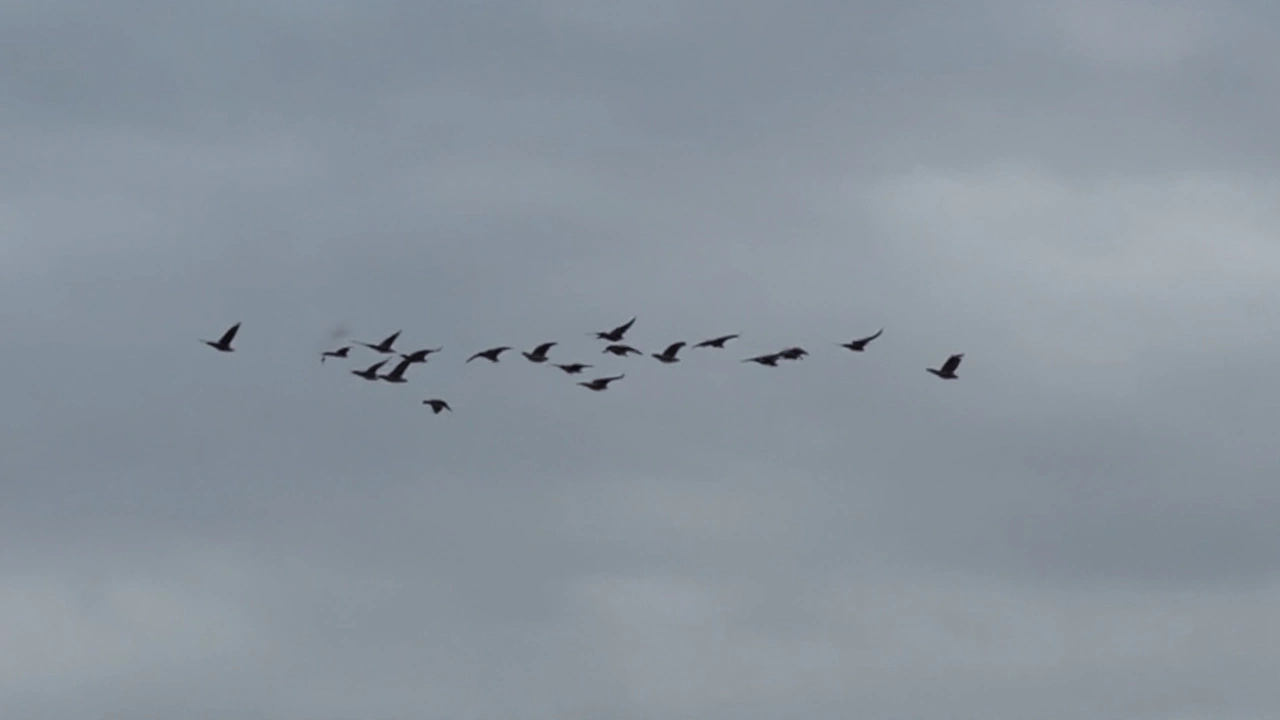On a crisp November evening in Rochester, New York, residents looked up—and saw something odd: Canada geese flying north. Not south. Not toward the coast or the Carolinas. North. Canada geese were heading the wrong way during fall migration, and it wasn’t a fluke. Local news outlet News10NBC received dozens of calls, including one from a resident who simply asked, "Why are they flying north every day?" The answer, experts say, isn’t about confusion—it’s about evolution, ecology, and the quiet transformation of North American wildlife.
Resident Geese, Not Migrants
The confusion stems from a fundamental misunderstanding of what these birds are doing. Many of the geese people are seeing aren’t migrating at all. They’re residents—part of a population that’s grown from a few thousand in the 1950s to an estimated New York State Department of Environmental Conservation reports 200,000 Canada geese across the state today. These aren’t the wild, long-distance travelers of old. These are birds born in city parks, golf courses, and suburban lakes. They’ve never flown south because they don’t need to.
When you see them flying north in November, they’re likely heading to a cornfield in Monroe County, a freshly harvested soybean plot in Ontario County, or a well-manicured lawn near the Genesee River. Food, not instinct, drives their movement. "They’re not lost," says June Summers, president of the Genesee Valley Audubon Society. "They’re just going to dinner."
The Molting Mystery
There’s another layer to this phenomenon, one that even seasoned birdwatchers sometimes miss. In late summer, adult geese lose their flight feathers all at once during a process called molting. For four to six weeks, they’re grounded—vulnerable, quiet, and confined to safe wetlands. Meanwhile, their yearlings, born just months earlier, are learning to fly. Once both groups regain flight, they take to the skies—not to migrate, but to explore.
According to the Cornell Lab of Ornithology’s All About Birds resource, these post-molt movements can happen in any direction. A family group might head north to a flooded field with tender grasses, or west to a reservoir with fewer predators. "It’s not migration," says ornithologist Dr. Lena Ruiz, who studies waterfowl behavior at the University of Buffalo. "It’s a family road trip. And they don’t have a GPS."
The Rise of the Non-Migratory Flock
This isn’t just a New York story. Across North America, resident Canada goose populations have exploded since the 1970s. Federal and state wildlife agencies deliberately reintroduced geese into urban areas to restore local populations after overhunting nearly wiped them out. But with fewer predators, abundant food from agriculture, and milder winters due to climate change, these birds stopped migrating altogether.
Today, more than 5 million resident Canada geese live in the U.S. and Canada—nearly half the total population. In cities like Chicago, Philadelphia, and even Washington, D.C., geese are so common they’re considered pests. Parks ban feeding. Golf courses hire drone operators. And yet, the birds thrive. "We’ve created the perfect habitat," says Summers. "Lakes without predators, fields without hunters, and winters that don’t freeze. Why would they leave?"

What About Snow Geese? A Different Story
While Canada geese are mostly staying put, their smaller, louder cousins—the Greater Snow Geese—are still migrating, but their routes are shifting. The Pennsylvania Game Commission documented unusual patterns at Middle Creek Wildlife Management Area in 2025. On March 14, just 5,000 Snow Geese were counted, down from 12,000 in February, as warmer temperatures pushed them north toward Arctic breeding grounds. But in October, the same area saw flocks returning from summer molting grounds hundreds of miles away, flying north before turning south again.
Researcher Dr. Eli Weegman, who tracks Arctic waterfowl, says storms and declining breeding success at traditional sites like Karrak Lake are forcing Snow Geese to nest farther east—on Baffin Island, for example. "They’re not lost," he notes. "They’re adapting. The Arctic is changing faster than we thought."
What’s Next for Geese—and Us?
Wildlife managers are now grappling with the consequences. In New York, the New York State Department of Environmental Conservation issues permits for controlled hunting and egg addling to manage overpopulation. But many residents oppose culling. Others love the sight of geese gliding over Lake Ontario at dawn. The tension is real.
Experts predict this phenomenon will only grow. With climate models projecting milder winters across the Northeast, more geese will stay put. More will fly north in November. More will be seen in parking lots and on tennis courts. "We’re not just watching birds," says Summers. "We’re watching an ecosystem adapt—and sometimes, it’s messy."

Why This Matters
These geese aren’t just a curiosity. They’re a living barometer of climate change, urban development, and our relationship with wildlife. Their flight patterns tell us: nature doesn’t always follow the rules we expect. Sometimes, it rewrites them.
Frequently Asked Questions
Why are Canada geese flying north in November instead of south?
Many Canada geese in New York and other northeastern states are non-migratory residents that have lived in the area year-round since the 1970s. In fall, they fly north—not to migrate, but to access food-rich agricultural fields like corn and soybean plots. These movements are local, not seasonal, and occur after their late-summer molt when they regain flight capability.
Are these geese the same ones that used to migrate long distances?
No. The geese flying north in November are primarily descendants of reintroduced urban populations that were deliberately placed in parks and lakes by wildlife agencies. While some wild migratory flocks still travel from Canada to the Carolinas, over half of the current Canada goose population in North America no longer migrates at all—thanks to abundant food, mild winters, and reduced hunting pressure.
Is this behavior new, or have people just started noticing it?
It’s not new—but it’s become far more visible. Since the 1980s, resident Canada goose populations have grown exponentially, from under 100,000 to over 5 million today. As urban populations expanded and more people live near lakes and fields, sightings have increased. What was once rare is now routine, especially in the Northeast and Midwest.
Do other species of geese behave this way?
Snow geese still migrate, but their routes are shifting due to climate change and breeding failures. Some now nest farther east on Baffin Island, and post-molt movements can involve northward flights before the main southward migration. Unlike resident Canada geese, they don’t stay year-round, but their timing and destinations are becoming less predictable than in the past.
Is there any risk to humans from these non-migratory geese?
Yes. Large resident populations can damage crops, create hazardous conditions near airports, and leave excessive droppings in public spaces. The New York State Department of Environmental Conservation manages them through egg addling, controlled hunting, and habitat modification. But public opinion is divided—many people enjoy seeing geese, even as officials try to reduce their numbers.
What does this mean for future wildlife management?
Wildlife agencies are shifting from traditional migration-based models to managing geese as urban wildlife. That means more focus on coexistence strategies—like discouraging feeding, protecting sensitive habitats, and using non-lethal deterrents. As climate change continues to shorten winters, we may see even more geese staying put, requiring new policies that balance conservation, safety, and public sentiment.



